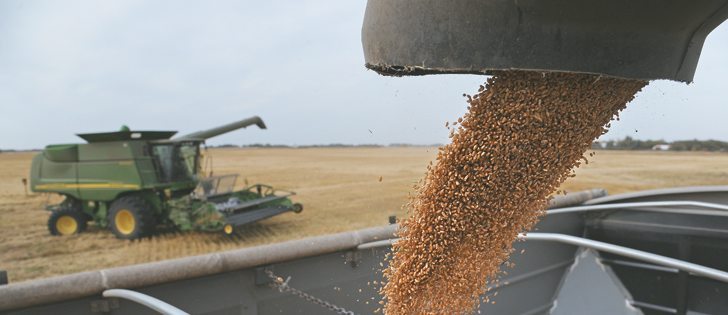Milling wheat | Price rally for high quality grain is expected to continue following poor 2014 harvest
The basis for top quality spring wheat has tightened in a big way and likely has further to go, say analysts.
“We’re seeing as high as $22 a tonne over Minneapolis futures,” said Derek Squair, president of Agri-Trend Marketing.
That is a far cry from the mid-winter lows for No. 1 Canada Western Red Spring 13 percent protein of $62 per tonne under the futures.
Squair said the dramatic turnaround in basis levels for top quality spring wheat is because of the poor quality of this year’s crop and strong global demand for good quality milling wheat.
Read Also

Flax sector sees omega-3 opportunity
SASKATOON — A global shortage of omega-3 oils could be an opportunity for the flax sector, says an industry official….
He believes basis levels will improve further in winter as harvest deliveries subside and there is less harvest pressure on the transportation system.
“They could probably go to $40 over,” said Squair.
“There needs to be an asterisk beside that (comment) because if futures go higher, then they don’t need to prop up the basis as much.”
The sudden improvement in basis levels caught CWB weather and crops specialist Bruce Burnett off guard.
“These basis levels have surprised me because I thought in the fall period we would still see some harvest pressure,” he said.
However, he agreed with Squair that basis levels are likely to continue strengthening.
“For high quality, high protein wheat, we probably have a way to go yet before this rally is done,” he said.
Rail transportation is the big wild card. The system is moving fluidly right now, but basis levels could soften if it bogs down again in winter.
Squair believes there is room for improvement in spring wheat futures values because of the shortfall of good quality crop.
“We feel that Chicago will stay lower, but there might be a little bit of a premium in the Minneapolis and Kansas City wheat futures because we’re so short in quality wheat in the world.”
However, he doesn’t expect a big rally in spring wheat futures because of the overabundance of global wheat, corn and soybean supplies, so the basis will likely do most of the heavy lifting.
The disparity with levels in the United States is another factor pointing to continued improvement in the basis levels in Western Canada.
“We’re still not as good as the U.S. market. Basis levels in the U.S. are $60 over,” said Squair.
Those values should arbitrage over time as long as there isn’t a repeat of last year’s rail logistics logjam.
“We should see better basis levels as we go (forward) to even out the spread between Canada and the U.S.,” he said.
Squair said basis levels are not tightening up for all grades of spring wheat. The feed wheat basis has widened out quite a bit because of the plethora of downgrading factors with this year’s crop.
The basis for No. 3 wheat is pretty good because processors can still work with frost damaged product or crop with high levels of hard-vitreous kernels. However, the discounts widen if the No. 3 wheat has high levels of vomitoxin.
















